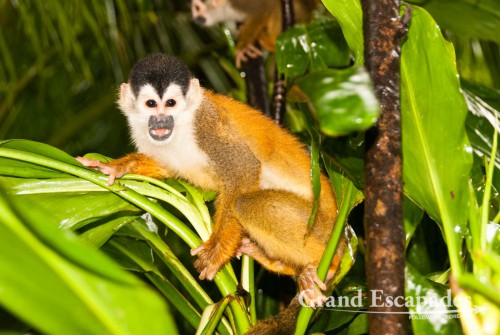
Highly endangered specie, Central American Squirrel Monkey (Saimiri oerstedii), also called Mono Titi, in the secondary rain forest, Punta Burica, Golfo de Chiriqui, Panama, close to the Border to Costa Rica, Central America
Juancho’s main goal was to create this protected area and establish a safe habitat for the monkeys in this area. Maybe I was lucky, but los monos visited several times a day, always one species at a time, always in groups, mainly waiting to get fed with bananas. Afterwards they would goof around producing as much noise as possible or just throwing mangoes on the ground. Juancho explained that the monkeys generally complete a tour of the property most mornings, late afternoons & often even more frequently.
Among the countless monkeys are the much endangered Central American Squirrel Monkeys or Mono Titi. It is estimated that there are only between 1.000 and 3.500 left of this species. Watching the monkeys, I learned that the Mono Titi mainly eats bananas, whereas the Mono Congo prefers to munch on mangoes & papaya leaves. The Mono Cariblanco on the other hand is a true gourmand: it devours bananas, papayas & corn, which does not make them popular with local farmers.
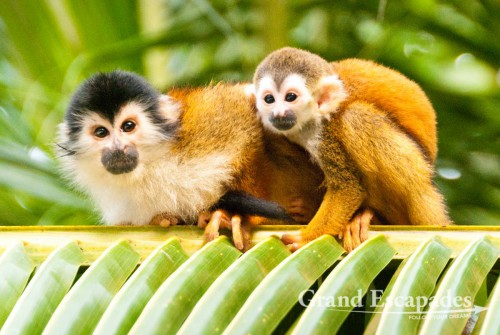
Highly endangered specie, Central American Squirrel Monkey (Saimiri oerstedii), also called Mono Titi, in the secondary rain forest, Punta Burica, Golfo de Chiriqui, Panama, close to the Border to Costa Rica, Central America

White-faced capuchin (Cebus capucinus), also called mono cariblanco, in the secondary rain forest, Punta Burica, Golfo de Chiriqui, Panama, close to the Border to Costa Rica, Central America
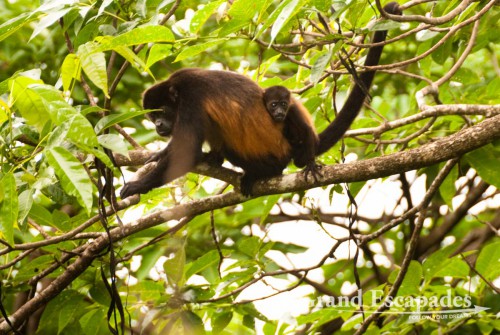
Howler monkey (genus Alouatta monotypic), also called Mono Congo, in the secondary rain forest, Punta Burica, Golfo de Chiriqui, Panama, close to the Border to Costa Rica, Central America
Especially feeding the Mono Titi became the daily highlight: these cute small creatures go nuts, jump on you, on your arms, on your head, just to catch a small piece of banana. Afterwards they shoot up a tree to gulp down their prey, undisturbed from the others, who at times become slightly aggressive to be the first to get fed.
These same monkeys developed a fun game: they discovered that jumping around on the tin roof of the cabins would make a hell of a noise. “Los Mono Titis son monos latinos, se quieren ruido” (“Squirrel Monkeys are Latinos, they love to make noise”) Juancho explained with a big laugh. Imagine the following commotion: with a “boom” they land on tin panel. This then changes into “trr trr trr trr” when the animals race from one side of the roof to the other. After a playful wrestle with a fellow monkey the “trr trr trr trr & boom” start again. A delight when you watch from the outside!
One thing I learned the hard way was that the male Mono Congo seems jealous of tourists. Once, when I approached them to take pictures of females, the males started to make fierce war cries. When I could not be scared away by their martial behaviour, they tried to urinate on me. Luckily, they missed!
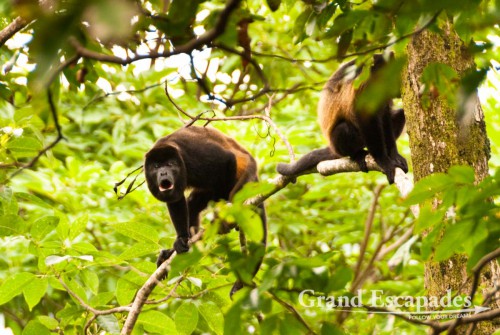
Howler monkey (genus Alouatta monotypic), also called Mono Congo, in the secondary rain forest, Punta Burica, Golfo de Chiriqui, Panama, close to the Border to Costa Rica, Central America
During long talks with Juancho, I also learned that now the females no longer have babies only in March, right before most fruits are in season, but all year round. The extremely witty and informative explanation for this phenomenon is delivered in the great book of John Ewing, “Monkeys are made of chocolate”: When food is secure and sufficient, primates have the ability to reproduce at any time of the year. This certainly will help the population to recover, something Juancho definitely aims at with his project “Mono Feliz”.
I am really glad that I went there, no matter how tough the trip there was. Not only because it was such a delight to watch these adorable creatures, but also because such projects need every support possible.
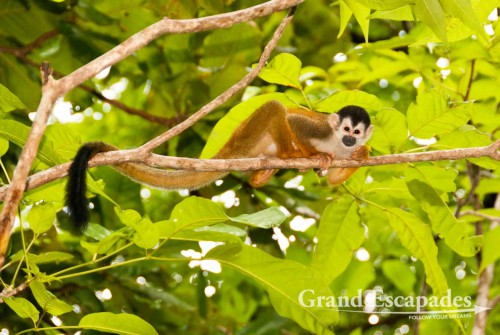
Highly endangered specie, Central American Squirrel Monkey (Saimiri oerstedii), also called Mono Titi, in the secondary rain forest, Punta Burica, Golfo de Chiriqui, Panama, close to the Border to Costa Rica, Central America

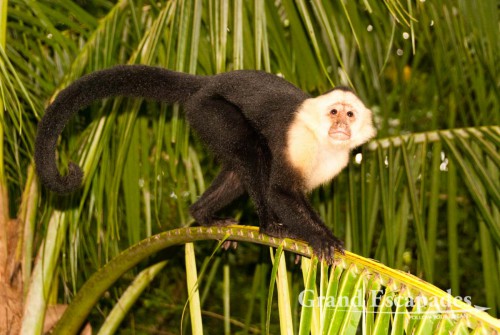

No comments yet.